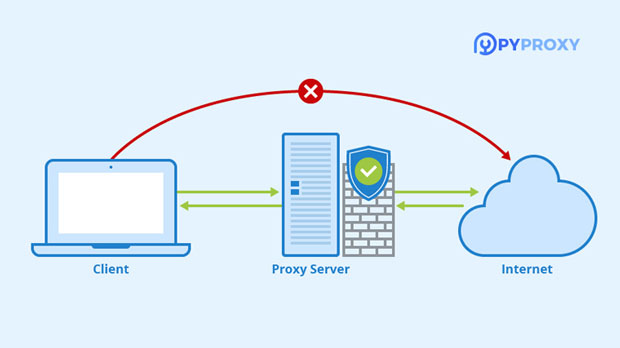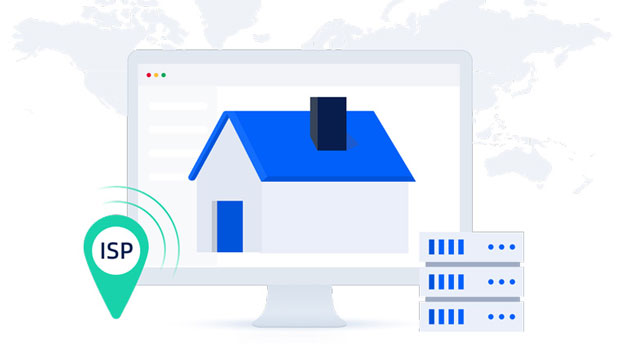Does the free Socks5 proxy service support anonymous browsing?
In today’s digital age, privacy has become a major concern for online users. Whether you're accessing sensitive information, bypassing geo-restrictions, or simply trying to remain anonymous, the tools you use can make a big difference. One such tool is the socks5 proxy. socks5 proxies are a popular choice for online anonymity, but many people wonder whether free SOCKS5 proxies provide true anonymous browsing. In this article, we will explore the workings of SOCKS5 proxies, the concept of anonymity, and whether free SOCKS5 proxies can reliably protect your privacy. Understanding SOCKS5 ProxyBefore delving into the specifics of anonymity, it is essential to understand what a SOCKS5 proxy is and how it operates. A SOCKS5 proxy is a type of internet protocol that routes your internet traffic through a server, effectively masking your real IP address. Unlike traditional HTTP proxies, SOCKS5 proxies can handle all types of internet traffic, including HTTP, FTP, and even torrents. This makes them more versatile for a variety of online activities.A SOCKS5 proxy works by intercepting your requests to websites and sending them through a proxy server. The destination website then sees the proxy server's IP address, not your actual IP address. This can help in keeping your identity anonymous to some extent. However, the level of anonymity depends on several factors, including the reliability of the proxy server itself.What is Anonymity in Online Browsing?Anonymity in online browsing means that your personal information, such as your IP address, browsing activity, and location, are concealed from the websites and services you interact with. When your identity is masked, it becomes more difficult for websites, advertisers, or even potential cybercriminals to track your actions online. The concept of anonymity can vary. For instance, some users may seek complete privacy, while others may only want to hide their location or prevent their data from being shared with third parties. Regardless of the level of anonymity you desire, understanding how different tools and technologies work is key to achieving it.Free vs Paid SOCKS5 ProxiesWhen considering a SOCKS5 proxy, users often face the choice between free and paid services. While both may offer similar basic functionality, there are notable differences between them, especially regarding privacy and security.1. Reliability and Speed: Free SOCKS5 proxies are typically slower and less reliable compared to their paid counterparts. This is due to the fact that free proxy services are usually overloaded with users, leading to slower connection speeds and intermittent service disruptions.2. Privacy Risks: The major concern with free SOCKS5 proxies is the lack of guarantees regarding privacy and anonymity. Free proxy providers often log user activity or may even sell your data to third parties for profit. This compromises the very reason you may have chosen to use a proxy in the first place: to maintain anonymity.3. Lack of Encryption: Many free SOCKS5 proxies do not offer encryption for your data, which means that even though your IP address may be hidden, your online activity can still be visible to hackers, ISPs, or government entities. Encryption is an essential element of maintaining privacy, especially when using public networks or engaging in sensitive activities.Can Free SOCKS5 Proxies Ensure Anonymity?Now that we understand the basic concept of SOCKS5 proxies, the question arises: Can free SOCKS5 proxies offer real anonymity? The answer is complicated and depends on various factors:1. No Logs Policy: True anonymity requires that no logs of your activities be stored. Some free SOCKS5 proxies claim to have a no-logs policy, but it is difficult to verify the authenticity of these claims. Since these services are typically free, they have little incentive to maintain transparency regarding their data handling practices. On the other hand, some paid services offer independent audits or guarantees regarding their no-logs policies.2. IP Address Leakages: Even if a proxy does mask your IP address, certain factors can lead to IP leaks. These include WebRTC leaks, DNS leaks, and even the use of unsecured websites. If a free socks5 proxy does not have adequate safeguards against such leaks, your real IP address may be exposed without your knowledge.3. Malware and Security Risks: Free proxy services are often targeted by malicious actors who use them as a vector for distributing malware. Additionally, free proxies may lack robust security measures to protect your connection from man-in-the-middle attacks. As a result, your browsing data may be intercepted, compromising your anonymity.4. Trustworthiness of the Proxy Provider: Free proxy providers often make money through ads or selling user data, which creates a clear conflict of interest when it comes to ensuring privacy. These providers might monitor user activity or inject tracking cookies, which undermines the very purpose of using a proxy for anonymity.5. Limited Features: Free SOCKS5 proxies often come with limitations in terms of speed, server locations, and other important features. The lack of features like IP rotation, automatic kill switch, or advanced encryption can make it difficult to maintain a high level of anonymity when using these proxies.Alternatives to Free SOCKS5 Proxies for Better AnonymityWhile free SOCKS5 proxies can be useful for basic tasks like bypassing geographical restrictions, they may not be sufficient for those who require a higher level of privacy and anonymity. For users who prioritize their online security, paid options or alternative solutions may be worth considering.1. Virtual Private Network (VPN): A VPN is one of the best tools for achieving online anonymity. Unlike SOCKS5 proxies, VPNs provide encryption for your entire internet traffic, making it much harder for anyone to track your activities. Additionally, reputable VPN services maintain a strict no-logs policy and provide features like DNS leak protection, kill switches, and IP address masking.2. Tor Network: For users who require extreme anonymity, the Tor network is a good alternative. Tor routes your internet traffic through multiple layers of servers (called nodes), making it extremely difficult to trace your origin. It is a free service, but the trade-off is slower browsing speeds due to the multiple layers of encryption.3. Paid SOCKS5 Proxies: If you prefer to stick with a SOCKS5 proxy, opting for a paid version from a reputable provider can offer better security, privacy, and performance. Many paid SOCKS5 proxies have built-in encryption, stronger privacy policies, and more reliable speeds.Conclusion: Are Free SOCKS5 Proxies Suitable for Anonymous Browsing?In conclusion, while free SOCKS5 proxies can offer some level of privacy by masking your IP address, they are not a reliable solution for full anonymity. There are too many risks involved, including potential data logging, IP leaks, and security vulnerabilities. Free proxies often come with limitations in speed, reliability, and features, and may even expose you to malware or tracking.For users who are serious about maintaining their privacy and anonymity, paid solutions such as VPNs or trusted paid SOCKS5 proxies are a better option. These services offer more robust privacy features, greater security, and more reliable connections. Ultimately, the level of anonymity you can achieve depends on the tools you choose and how carefully you protect your online activities.
2024-12-26

























































